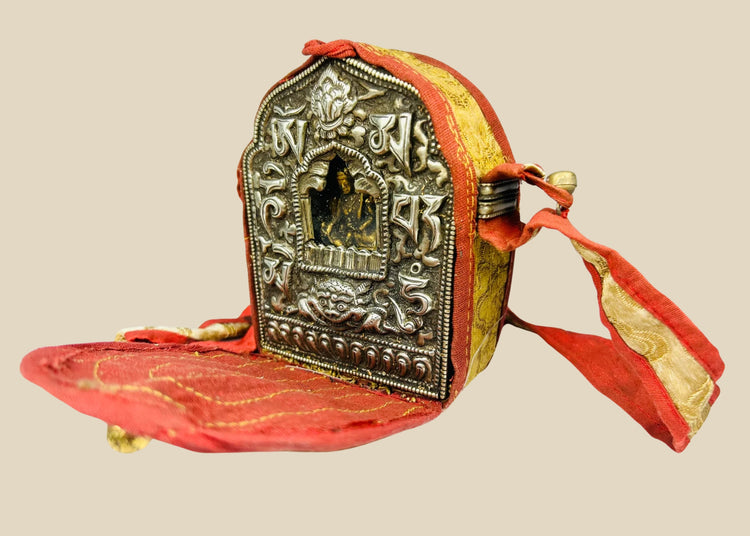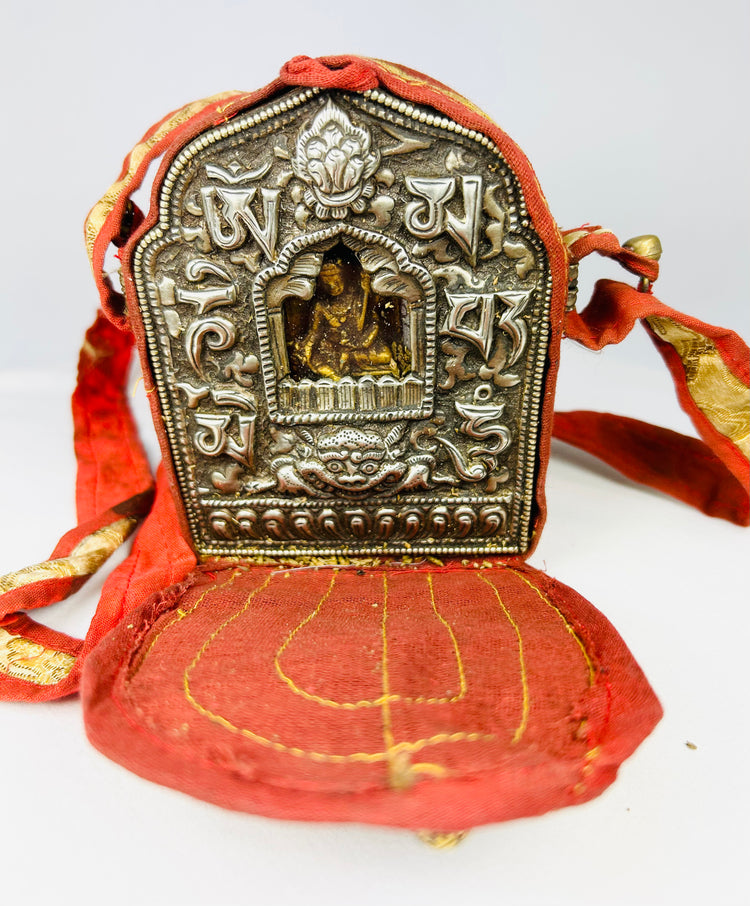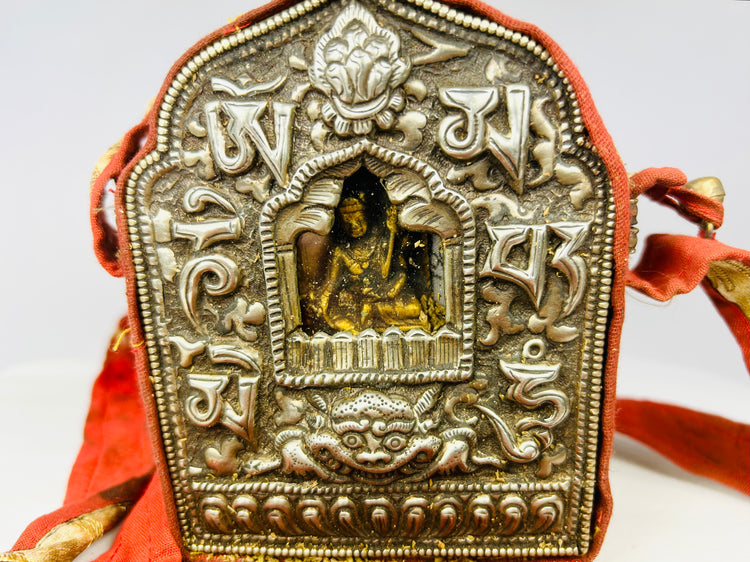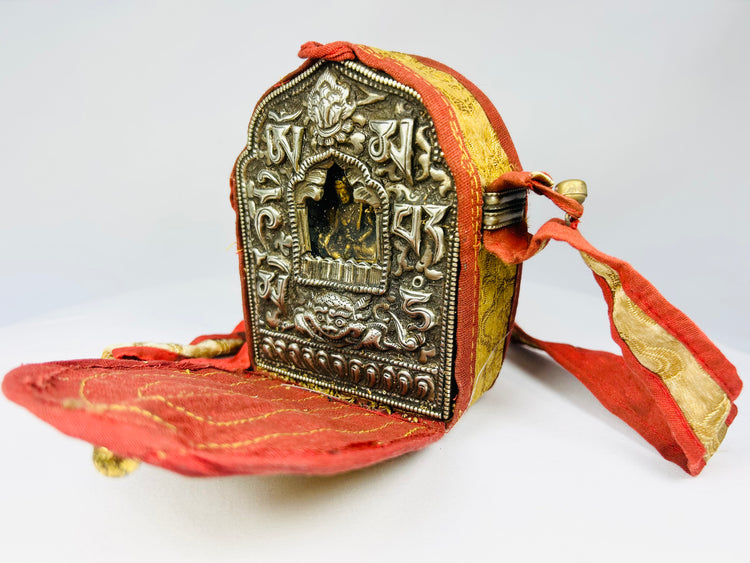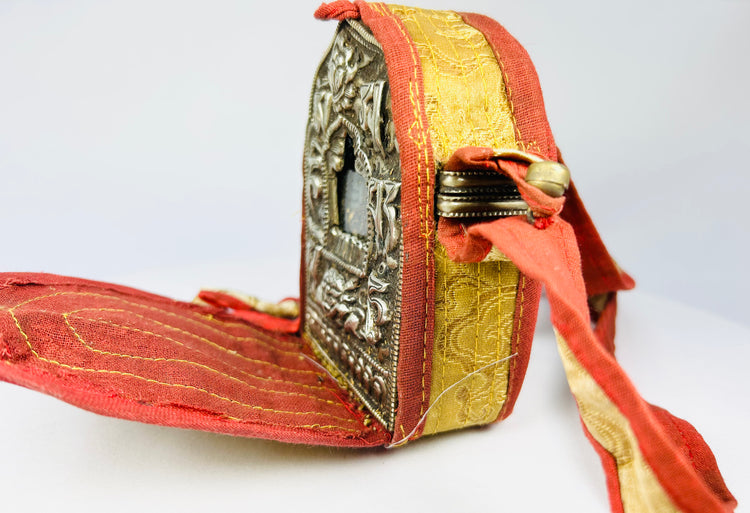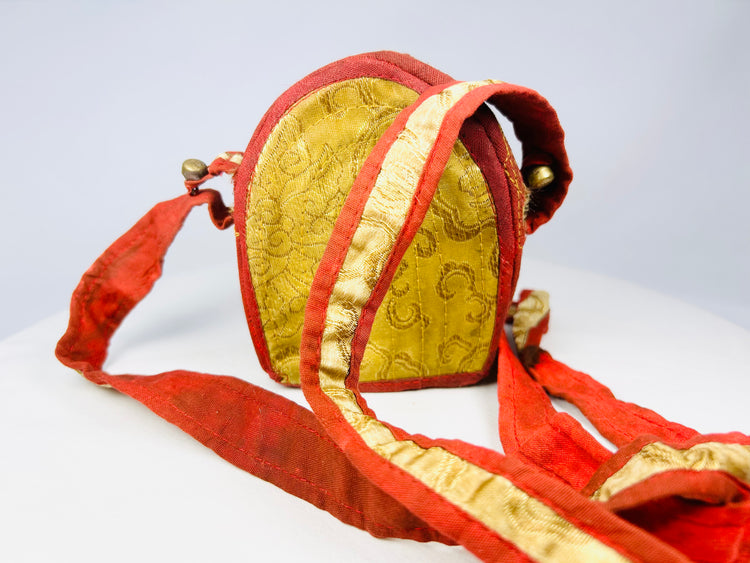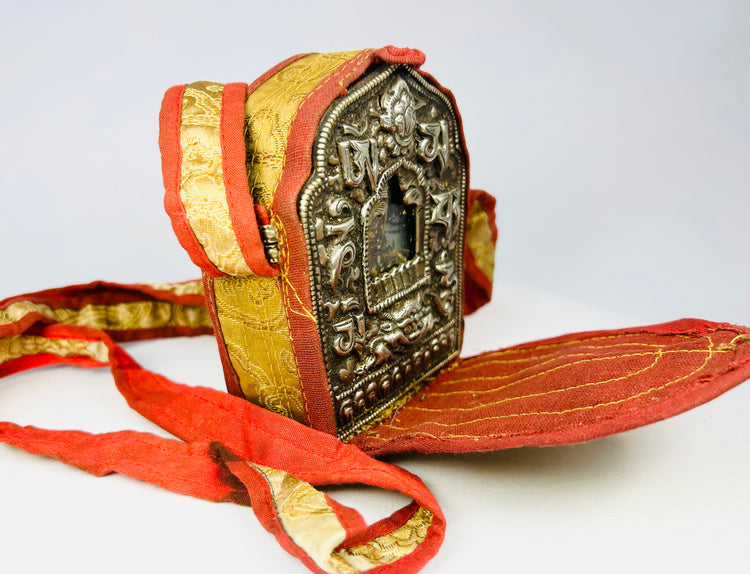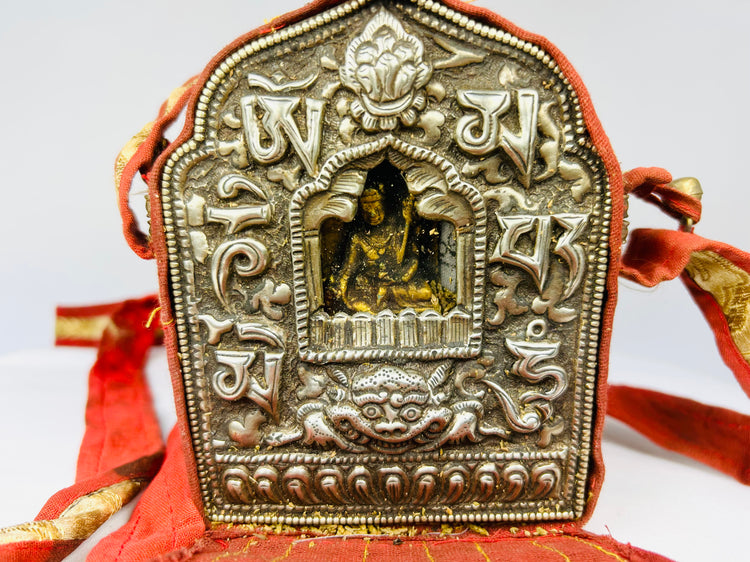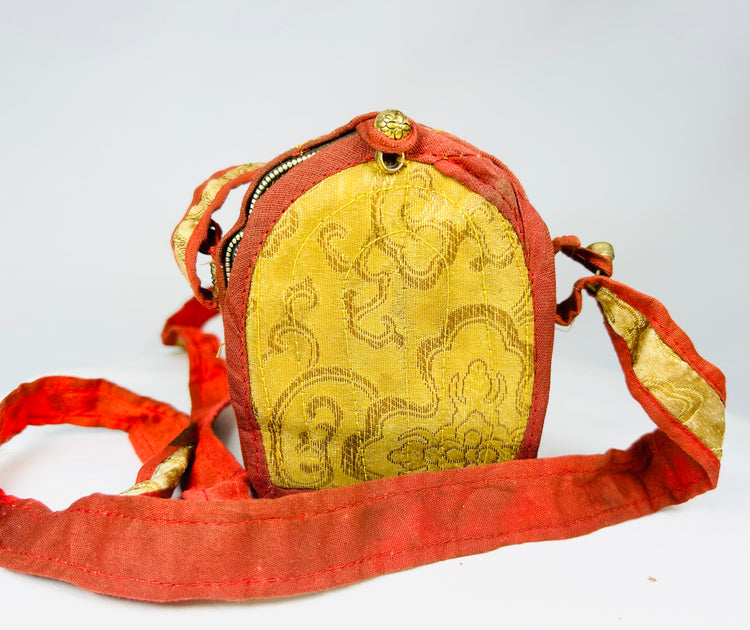Antique Buddhist Gau Reliquary | Portable Shrine with Gilt Backing | 18th–19th Century
Description
More
Less
Historical Context & Origin
Region: Tibet / Himalayan Region
Material: Silvered copper alloy, gilt backing, fabric strap
Period: 18th–19th Century
Description
This ornate Tibetan Buddhist Gau shrine is a portable amulet box, created to hold sacred relics, scriptures, or protective images. The repoussé silvered front depicts a seated Buddha within an arched shrine frame, surrounded by auspicious motifs, while the back is enclosed by a gilt metal plate. Retaining its original red fabric strap, this Gau would have been worn during travel or pilgrimage, serving both devotional and protective purposes. Its intricate workmanship and symbolic imagery embody the deep spiritual traditions of Himalayan Buddhism.
Features
- Repoussé copper alloy with silvered surface
- Central seated Buddha framed by auspicious motifs
- Intact gilt metal backing plate
- Original red fabric carrying strap preserved
- Portable size, designed for travel and pilgrimage use
Cultural Significance
Gau shrines were central to Tibetan devotional life, functioning as personal reliquaries carried by monks, lay practitioners, and pilgrims. They safeguarded the bearer by housing mantras, relics, or deity images, believed to offer spiritual protection and good fortune. Beyond their practical role, Gau shrines represented a fusion of faith and artistry, reflecting both the portable nature of Tibetan religious practice and the broader aesthetic traditions of Himalayan craftsmanship. Today, they are highly valued as cultural artifacts embodying devotion, protection, and heritage.
Condition
Excellent preservation with natural patina and minor surface wear. Original fabric strap shows expected fraying from age. Structurally sound with no repairs noted.
Dimensions (approximate)
Height: 5 in
Width: 4 in
Depth: 2 in
Age
Circa 18th–19th Century
Description
Historical Context & Origin
Region: Tibet / Himalayan Region
Material: Silvered copper alloy, gilt backing, fabric strap
Period: 18th–19th Century
Description
This ornate Tibetan Buddhist Gau shrine is a portable amulet box, created to hold sacred relics, scriptures, or protective images. The repoussé silvered front depicts a seated Buddha within an arched shrine frame, surrounded by auspicious motifs, while the back is enclosed by a gilt metal plate. Retaining its original red fabric strap, this Gau would have been worn during travel or pilgrimage, serving both devotional and protective purposes. Its intricate workmanship and symbolic imagery embody the deep spiritual traditions of Himalayan Buddhism.
Features
- Repoussé copper alloy with silvered surface
- Central seated Buddha framed by auspicious motifs
- Intact gilt metal backing plate
- Original red fabric carrying strap preserved
- Portable size, designed for travel and pilgrimage use
Cultural Significance
Gau shrines were central to Tibetan devotional life, functioning as personal reliquaries carried by monks, lay practitioners, and pilgrims. They safeguarded the bearer by housing mantras, relics, or deity images, believed to offer spiritual protection and good fortune. Beyond their practical role, Gau shrines represented a fusion of faith and artistry, reflecting both the portable nature of Tibetan religious practice and the broader aesthetic traditions of Himalayan craftsmanship. Today, they are highly valued as cultural artifacts embodying devotion, protection, and heritage.
Condition
Excellent preservation with natural patina and minor surface wear. Original fabric strap shows expected fraying from age. Structurally sound with no repairs noted.
Dimensions (approximate)
Height: 5 in
Width: 4 in
Depth: 2 in
Age
Circa 18th–19th Century
You May Also Like
























